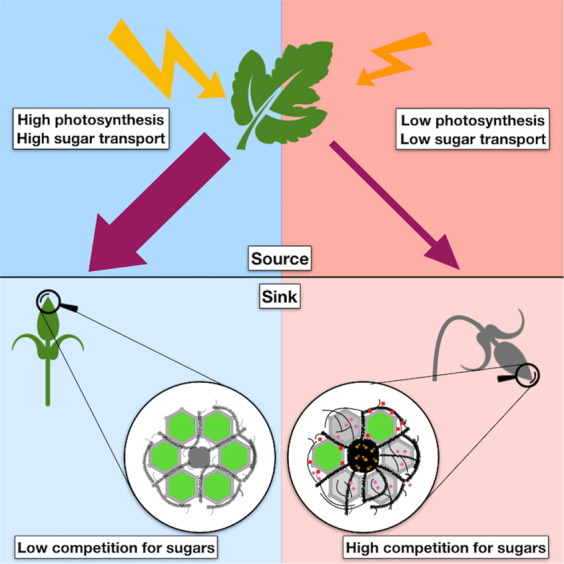Figure 9.

Proposed model for the metabolic interactions between grapevine and endophytic fungi that may result in bud necrosis (BN). Endophytic fungi produce filamentous mycelia and colonize biotrophically between living cells (green cells) of grapevine under optimal conditions (blue side). Alternatively, these fungal endophytes change to a necrotrophic lifestyle under stressful conditions (red side). Under optimal conditions buds are sink organs supported by photosynthetic organs (upper leaf) that can benefit from the endophytes in mutualistic relationship. Stressful events such low production of sugars from leaves (thinner purple arrow) or enhanced infection by viruses (small yellow circles) can trigger the expression of genes related to a necrotrophic lifestyle and start the synthesis of toxins (pink diamonds). Under these circumstances, necrosis (gray bud) can arise as an innate plant defense mechanism caused by the expression of programmed cell death genes and the synthesis of defense related compounds such reactive oxygen species and flavonoids (red squares) to stop the spreading of necrotrophic organisms and the death of additional plant cells (gray cells).
